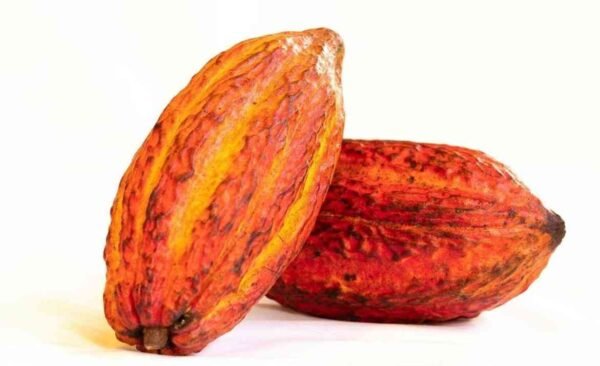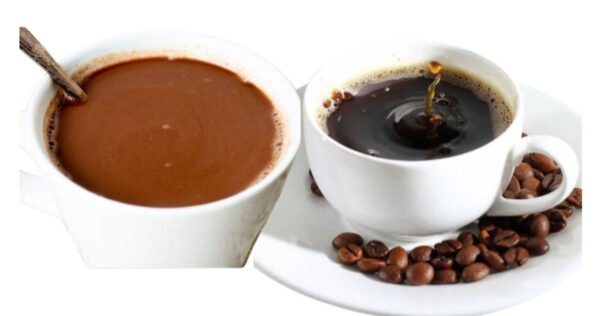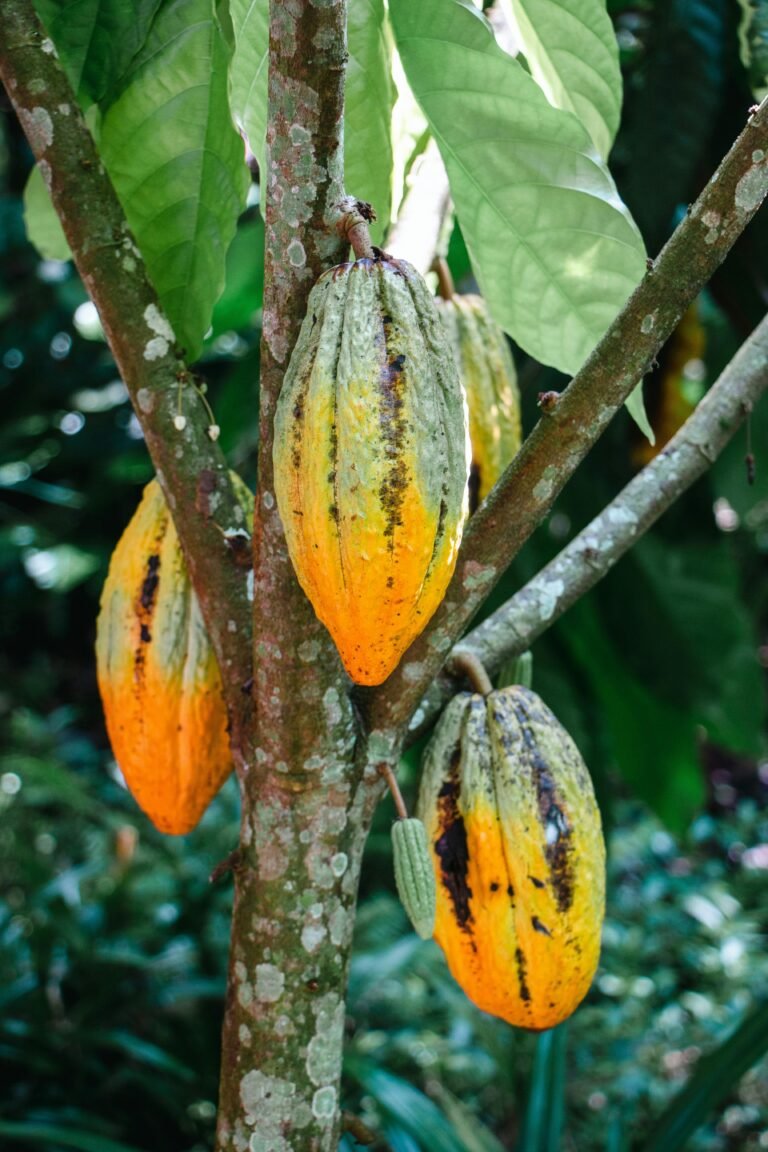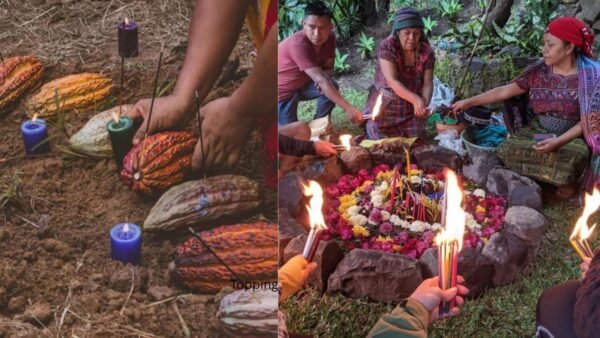
A cacao pod is the fruit of the Theobroma cacao tree.
The word “Theobroma” came from Greek; “theo” means “God”, and “broma” means “food”. So, Theobroma literally means “Food of the Gods!”
Have you ever wondered where chocolate truly begins? No—not in a factory!
It all begins deep inside the humble cacao pod—nature’s hidden treasure.
In this single post, we’ll explore every detail of the cacao pod—so stick around.
Here is the physical characteristic of a cacao pod
Outer layer: The outer shell of a cacao pod is oval-shaped or a shape like a rugby ball. The outer layer is thick and hard.
Size: Length: 15–20 cm, though some varieties can reach up to 30 cm, Diameter: Around 8–10 cm Weight: Usually between 300–500 g, sometimes even up to 1 kg for exceptionally large pods.
Colour: The colour of a raw cacao pod can be green or purple depending on its type, variety, and genetics. As it matures or ripens, its colour changes to yellow, orange, red or purple.
Can you eat a cacao pod?
Yes, you can eat, but not the whole pod.
Some parts of the cacao pod are edible, while others are not. You can only eat the edible part of a cacao pod.
So, let’s discuss the edible and inedible parts of a cacao pod.
Pulp

When you open a cacao pod, you will find white colour, tangy, pulpy flesh surrounding the seeds. This is cacao pulp and this pulp is edible; it’s delicious. It has a sweet and citrus taste. Many people say that it tastes like a lychee.
You can eat the pulp fresh, or you can add it to your favourite smoothie or juice. People also use it to make jams or fermented juice.
The pulp is also packed with nutrients and antioxidants, same like the beans.
Beans

If the word ‘beans’ is unfamiliar to you, then I want you to know that, the seeds of a cacao pod are also known as beans.
Inside of a cacao pod you will find 20 to 60 beans. These beans are the main ingredient of chocolate. Without beans there is no chocolate.
Raw cacao beans are bitter in taste. Before becoming edible, cacao beans undergo some processes called fermentation, drying, roasting and grinding.
After grinding, you will get the final fine powder, and this the fine powder you will need to make chocolate.
This fine powder is not only used in chocolate making but also used in many food dishes to give it a chocolate flavour. For example, cake, ice cream, smoothies, bliss balls, etc. Some people also use it to make cacao tea.
Shell

Cacao shell is not edible. It is hard and bitter. But native villagers don’t let them go to waste: they compost the shells in an eco-friendly, sustainable way.”
So, you can see that every part of the cacao – from pulp and bean to shell – is useful. Maybe that’s why ancient people called it ‘Food of the Gods’.
Conclusion
Cacao pod is a magical fruit that not only gives us the beans that are the source of chocolate but also offers delicious pulp and a high amount of antioxidants and nutrients.
The inedible part, which is the cacao shell, is also used for composting. Making use of every part of the cacao pod not only reduces waste but also honours the ancient reverence for this “food of the Gods.”
You may also like to read




